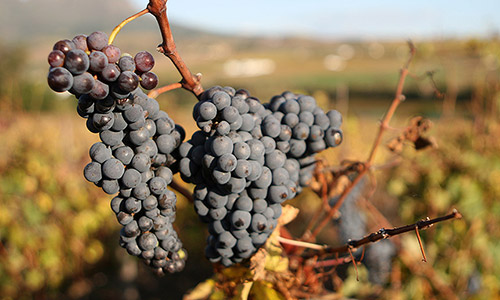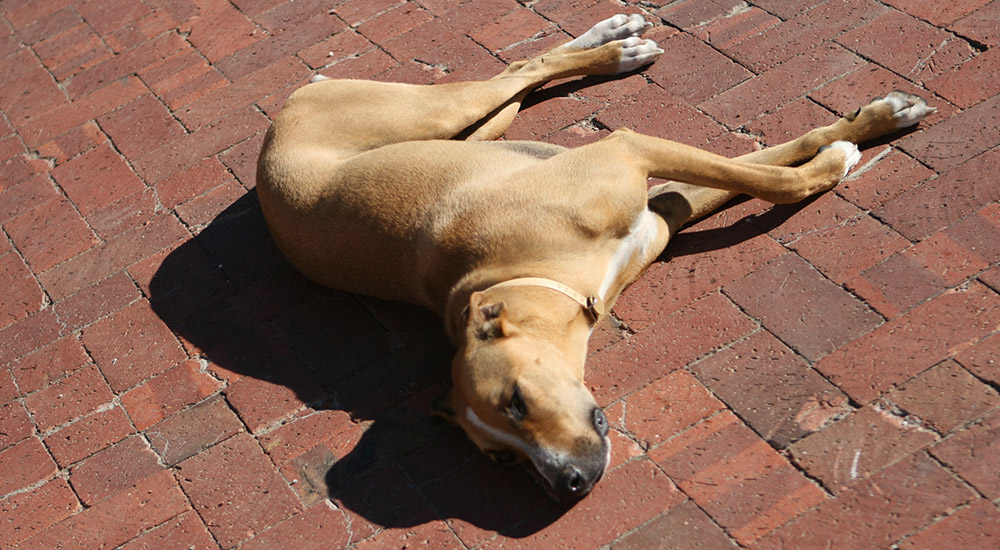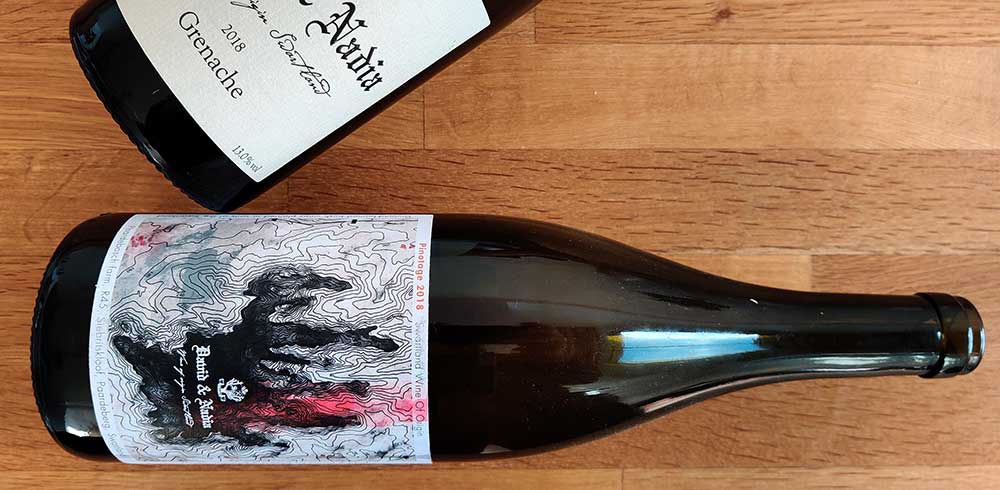Members of the wine trade are cursed to forever wander from party to party and set the record straight with regards to Chardonnay.
The ‘Anything But Chardonnay’ crowd still walk among us and it must be constantly explained to them that you shouldn’t judge a grape by bad examples, that Chardonnay’s a classic, it makes Chablis and Champagne and that the bad old days of over-oaked styles have been superseded by a glorious new age of leaner, fresher wines from Santa Barbara to Marlborough.
Wine lovers are very diligent in this regard and so they should be. Chardonnay is a fantastic grape even if punters developed their ‘ABC’ tendencies in a perfectly rational reaction to a slew of wines that had, literally, become so vanilla and a byword for incredible race-to-the-bottom naffness there was even a joke certain quarters of society were naming their children after it.
Chardonnay is not alone in grapes with a maligned reputation. But while the trade is happy to welcome back into the fold wayward varieties with the right connections, like the spoilt brat who did ‘that thing’ at university but escaped jail time because mummy and daddy are wealthy and powerful, other varieties are looked on askance.
“Your least favourite grape?”
Throw a dumb question to wine trade types (of the sort you’d normally discourage in amateurs) such as ‘what’s your least favourite grape variety?’ and a good slew of the answers coming back at you will involve what seems to be the most hated variety in South Africa – Pinotage.
Desperate though they may be to set the record straight with doubters when it comes to the variety that makes Meursault and Montrachet (even as they spent all those years turning to expensive brown disappointments), parts of the wine trade would, with neither thought nor care nor feeling and a song in their hearts, throw Pinotage under a high-speed train and burn the remains in a pit before flushing the ashes down a public lavatory.
There is justifiable criticism of Pinotage but the more I’ve tasted of Pinotage over the years the more outdated many residual attitudes appear.
Yet if you make the point that it’s very capable of making some jolly good wines, all the fine words about not judging a variety on poor examples crumble into dust when discussing Pinotage. The unconvinced grimace a bit and cede you a half-point point but ultimately conclude that, be that as it may, it’s still a terrible grape and the law of averages means infinite monkeys on infinite typewriters will crank out something readable once in a while.
Yet this is the same sort of crazed irrationality and refusal to change an opinion no matter how inadequately formed that will not stand if expressed about particularly beloved varieties or styles.
Infinite Pinotage Theorem
 Without going over too much old ground Pinotage was created in 1925 by Abraham Perold, the Professor of Viticulture at the University of Stellenbosch. A cross between Pinot Noir and Cinsault (the latter known locally as ‘Hermitage’ hence the portmanteau name).
Without going over too much old ground Pinotage was created in 1925 by Abraham Perold, the Professor of Viticulture at the University of Stellenbosch. A cross between Pinot Noir and Cinsault (the latter known locally as ‘Hermitage’ hence the portmanteau name).
Now, it has often been the case that when humans decide to ‘improve’ a grape variety the results are… mixed to say the least. Pinotage is indeed host to a gaggle of issues that have done it no favours.
Plant Pinotage in an area that is too warm and it will gallop away into a raging sugar factory if you let it. And all these jammy and overripe wines ponging strangely of rubber and bananas, with a very un-Pinot-like aptitude for massive and unwieldy tannins, have ended up tainting its reputation like nothing else.
Part of the problem is that as a ‘native’ South African grape it was a variety that was partly felt needed to be South Africa’s ‘thing’ and yet also something that not a great many producers wanted to spend much time on as they’d rather have been making red wines from more broadly popular and successful varieties like Cabernet Sauvignon.
The late 1990s also did it no favours due to the of all-pervading lust for maximum extraction and new oak at the time. Add in a great deal of virus-ridden plant material, over-cropped to within an inch of its life and the result was a hot mess of lazily and uncaringly made wines reeking of acetone. Horrible for sure.
But there are parallels between Pinotage and other varieties. Carmenere was meant to be ‘the thing’ in Chile and so planted willy-nilly in all the wrong places and just ended up tasting of pyrazines; Gamay was sold out for all that bananary Beaujolais Nouveau and Grenache in Shiraz-rules-era Australia spent decades as an after-thought and many wines were hot dollops of nondescript alcoholic jam.
Yet Gamay and Grenache have been thoroughly rehabilitated to the point of maximum coolness and Carmenere never became a by-word for varietal disaster (and can be very good in fact). Hopefully you see the point that Pinotage is a variety that, like many others, was sacrificed on the altar of expediency.
A one-country road show
Perhaps it was also Pinotage’s misfortune that it wasn’t really grown anywhere else – New Zealand is the next notable place with a whopping 38 hectares. For every trashy two buck Chardonnay from California’s Central Valley, one could always point to Meursault as a counter argument but with Pinotage the muck stuck.
Pinotage is a difficult variety to get right in both the vineyard and cellar but ultimately it wants and needs what so many varieties want and need which is planting in the right place and then proper care and attention. The results can be rewarding for both winemaker and consumer as Pinotage is a grape capable of a broad spectrum of styles from deeper, darker, almost marshmallow pillowy wines to very light, succulent examples flaunting that Pinot DNA and terroir expression to boot.
Price is not a determining factor as to what you’ll find in the bottle either. In the name of “research” I recently purchased a bottle of Radford Dale’s ‘Frankenstein’ Pinotage (2015 vintage no less) for £23 and a bottle of False Bay Pinotage for £7.99.
Both were excellent and offered considerable bang for their buck. The False Bay was a ‘fuller’ style with more plum and damson aromas backed up with a refreshing tang of acidity and an acceptable note of end-of-barbecue smokiness, while the Radford Dale was more Pinot-like, a cherry and raspberry compote and a fresh, silky texture slipping cross the palate.
Thankfully, I’m not alone in this playground of discontent idly alone with my hobbyhorse. In a sign that the wine world is taking note, Tim Atkin’s 2017 South Africa report named Abrie Beeslaar’s Pinotage as the ‘Wine of the Year’ – Beeslaar is the winemaker at Kanonkop, which has long been rated for its Pinotage.
Putting a new face on an ‘old’ grape
South African producers increasingly have a handle on Pinotage now, they know how to work with it and not make it something it’s not meant to be.
Old bush vines which naturally curtail vigour and crop levels are always good, keeping away from the hottest spots another and in the winery remember that it doesn’t need much in the way of extraction.
The results are better, vibrant and fresher wines that demand that Pinotage be treated with proper critical appraisal not just blinkered criticism.
The wheel has turned and if you want to know just how far consider this. In 2018 Emul Ross, the winemaker at Hamilton Russell (which makes super Pinotage under its Ashbourne and Southern Wright labels) teamed up with Eben Sadie, one of the hot rock gods of New Wave Cape winemaking, to make a limited-edition Pinotage for the Cape Wine Auction this February.
The wine trade talks a lot about education but is often a hive of petty prejudices that are oft repeated instead of questioned from time to time, becoming canon as a consequence. The Sadie-Ross project (called ‘Man & Soil’) in a jab–whether unknowing or otherwise–carried a quote on the label from Nelson Mandela:
‘Education is the most powerful weapon which you can use to change the world.’
I don’t know about changing the world but you should certainly do yourself a favour and get a fresh perspective on Pinotage; with the rest of the cool kids.
You’re reading a free article on Hudin.com.
Please consider subscribing to support independent journalism and get access to regional wine reports as well as insider information on the wine world.
A small selection of notable Pinotage producers:
- Ashbourne
- B Vintners
- Beeslaar
- Black Elephant Vintners
- Bruce Jack
- David & Nadia
- Diemersdal
- False Bay
- Kanonkop
- Lammershoek
- Moreson
- Radford Dale
- Rijk’s
- Southern Right
If people have other suggestions, please mention them below in the comments!


To this list I’d also add Rijk’s…the winemaker there, Pierre Wahl is known as the Pope of Pinotage.
Added!
Graziano Family of Wines is one of the oldest producers of Pinotage in the United States in Mendocino County
How interesting. I know there’s a little bit of Pinotage in the States but I’ve never come across any so far. I doubt much makes it over to the UK but I shall bear Graziano in mind if I venture near Mendocino in future.
I also rate L,Avenir, their Single Site is particularly good in the more restrained lighter style.
L’Avenir are very highly rated. Good shout.
If you can find it, Scali in ZA makes nuanced, well-crafted Pinotage.
Chamonix and The Greywacke Pinotage. Gottfried Mocke was making the wine when I visited in 2010. The grapes are air dried and re-fermented, leading to a Ripasso style, full on, rich and complex.
Great article! Reverie Pinotage by Radford Dale winemaker Jacques de Klerk is awesome too. New wave, juicy, carbonic maceration example.
If you get a chance to visit Virginia, check out our Pinotages. Horton Vineyards and Lovingston are probably the two best.
You should check out The Giant Periwinkle Sun Spider Pinotage from near Cape Agulhas. Fragrant, fresh & with just 12% alcohol, it’s delicious and leans very much to its pinot parent.
Sounds excellent, will do!
Also tracked down where I wrote about Jeff Pisoni, who has worked several harvests in S Africa. As well as making his family wines in California, he also makes the wines for the South African owners of Fort Ross Vineyard; these include a small amount of pinotage. ‘Fun stuff’ says Jeff.
You should also give Painted Wolf a go. The Guillermo Pinotage from Swartland organic grapes is the flagship Pinotage and is spicy and almost rhone like, and there are three other wines, the Den which is a beautiful juicy crowd pleaser, a Black pack pinotage from high altitude Breedekloof fruit and a pale pinotage rose, delicate and bone dry . And to top all, sales contribute to the conservation of critically endangered African Painted Wolves.
Great recommendation, have been wanting to try their wines for a while
Beyerskloof makes delicious pinotage too. Made by the King of Pinotage – Beyers Truter.
Ah, Beyerskloof make great wines. Good shout!
Rupert, glaring omissions from your list include the Reserves and Diesel from Beyerskloof, Rijk’s and Flagstone. The top examples according to the 2020 SA Wine Classification as follows: Beyerskloof Diesel, Diemersdal Reserve, Diemersfontein Carpe Diem Reserve, Flagstone Writer’s Block, Kanonkop, Rijk’s Private Cellar, Rijk’s Reserve, Simonsig Redhill, Spier 21 Gables, Wildekrans Barrel Select Reserve and Windmeul Reserve.
Thanks for the heads up, will be sure to track them down!
Boela from Groot Constantia makes the only Pinotage in the Constantia Valley and it is an excellent example of a well made Pinotage soft tannins and berry flavours with a good finish.
It’s tough to be definitive about Pinotage if examples from only one country have been tasted. Economic boycotts of RSA over many years hindered he spread of Pinotage, but it is being planted in many countries.
Loma Prieta in California is the largest Pinotage producer in the USA with a range of vineyard specific Pinotages. Stoneboat and the View wineries in BC grow ungrafted Pinotage which beg to be tasted. Virginia, Oregon make excellent Pinotage, as does Del Gatto in Ontario.
Production in NZ had drastically fallen because export markets want NZ Pinot Noir and Sauvignon Blanc but good wines are made there.
As indeed there are many great examples made in RSA, as previous comments have pointed out. The annual Pinotage Top 10 competition winners show just some of them.
A correction, the SA winery is Southern Right (without a ‘w’) named after the whale.
Ah yes, you’re quite right (wright?). My mistake with the spelling there.
And thanks for the other recommendations too! Didn’t know about the ones in BC, will ask a good friend there to be on the look out and maybe track some down for me.
Great article. I’m a staunch defender of Pinotage as I believe its the one cultivar that proves that the wine trade is still inhabited by a few narrow minded, prejudiced, pompous and out-of-touch critics who will never change their minds on the wines it produces. Throw into that the dark and troubled past that our country has endured then it was bound to be written off by some before even getting off the ground. I think the success with Pinotage lies in it being a component in what we call a Cape Blend i.e. blended with other red cultivars such as Cabernet and Shiraz. There are plenty of good examples out there and gives us saffas our own version of the Bordeaux Blend. Sure there are a good many very decent single varietal examples but the Cape Blend category is a very exciting one as it allows Pinotage to demonstrate its versatility when working with other cultivars.
Great read, long overdue! Thank you. Other than the Beyerskloof and Groot Constantia mentions I would include Grangehurst in your list. I am now drinking the 2008, of which I bought quite a few cases,and it is magnificent.
Delheim make some nice Pinotage’s too! Nice vineyard for lunch if you’re ever near Stellenbosch.
Woman & Wolf should be in here as well. Great pinotage! Fruit-driven style. Reminds me of B Vintners Pinotage.